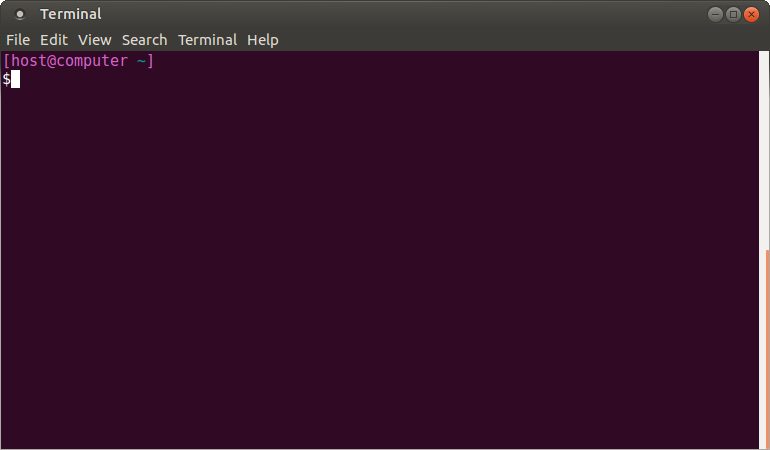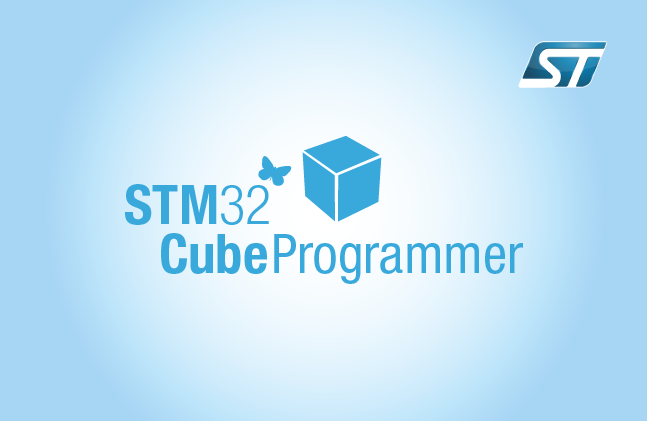1. Open a terminal[edit source]
Open a terminal on the host computer.

Ubuntu terminal
All the commands preceded by have to be executed from the host computer terminal.
- Create your STM32MPU workspace directory on your host computer
mkdir $HOME/STM32MPU_workspace cd $HOME/STM32MPU_workspace
2. Check the host computer Internet access[edit source]
- An Internet access through http and https protocols must be provided.
The command below allows to check for Internet access through http/https protocols:
wget -q www.google.com && echo "Internet access over HTTP/HTTPS is OK !" || echo "No internet access over HTTP/HTTPS ! You may need to set up a proxy."
If an 'OK' message is returned, the network is well configured.
In such case, skip the rest of this section.
Any other likely situation indicates the need for a proxy for http/https protocols.
The best solution to set a proxy for http/https protocols is via the shell variables http_proxy and https_proxy:
export http_proxy=http://<MyProxyLogin>:<MyProxyPassword>@<MyProxyServerUrl>:<MyProxyPort> export https_proxy=http://<MyProxyLogin>:<MyProxyPassword>@<MyProxyServerUrl>:<MyProxyPort>
Check again the Internet access with command:
wget -q www.google.com && echo "Internet access over HTTP/HTTPS is OK !" || echo "No internet access over HTTP/HTTPS ! You may need to set up a proxy."
3. Install the tools[edit source]
3.1. STM32CubeProgrammer[edit source]
- Create your STM32MPU tools directory on your host computer
mkdir $HOME/STM32MPU_workspace/STM32MPU-Tools mkdir $HOME/STM32MPU_workspace/STM32MPU-Tools/STM32CubeProgrammer-2.0.0
- Create a temporary directory in your STM32MPU workspace
mkdir $HOME/STM32MPU_workspace/tmp
- Download STM32CubeProgrammer v2.0.0 in the following directory
$HOME/STM32MPU_workspace/tmp - Uncompress the archive file to get the STM32CubeProgrammer installers
cd $HOME/STM32MPU_workspace/tmp unzip SetupSTM32CubeProgrammer.zip
- Execute the Linux installer, which guides you through the installation process. Select "$HOME/STM32MPU-Tools/STM32CubeProgrammer-2.0.0" as the installation directory, when it's requested by the installer
./SetupSTM32CubeProgrammer-2.0.0.linux

Splash screen
File:STM32CubeProgrammer installation welcome.png
Welcome page
File:STM32CubeProgrammer installation path.png
Installation path
- Add the STM32CubeProgrammer binary path to your PATH environment variable
export PATH=$HOME/STM32MPU_workspace/STM32MPU-Tools/STM32CubeProgrammer-2.0.0/bin:$PATH
- Check that the STM32CubeProgrammer tool is properly installed and accessible
STM32_Programmer_CLI --h
-------------------------------------------------------------------
STM32CubeProgrammer v2.0.0
-------------------------------------------------------------------
3.2. USB serial link[edit source]
- Install the libusb on your host computer
sudo apt-get install libusb-1.0-0
- To allow STM32CubeProgrammer to access the USB port through low-level commands, proceed as follows
cd $HOME/STM32MPU_workspace/STM32MPU-Tools/STM32CubeProgrammer-2.0.0/Drivers/rules sudo cp *.* /etc/udev/rules.d/
4. Download the image[edit source]
- Create your STM32MP15 Starter Package directory on your host computer
mkdir $HOME/STM32MPU_workspace/STM32MP15-Ecosystem-v1.0.0 mkdir $HOME/STM32MPU_workspace/STM32MP15-Ecosystem-v1.0.0/Starter-Package cd $HOME/STM32MPU_workspace/STM32MP15-Ecosystem-v1.0.0/Starter-Package
- Download the STM32MP15-Ecosystem-v1.0.0 Starter Package to the following directory:
$HOME/STM32MPU_workspace/STM32MP15-Ecosystem-v1.0.0/Starter-Package - Uncompress the tarball file to get the binaries for the different partitions of the image, and the Flash layout files
tar xvf en.FLASH-openstlinux-4.19-thud-mp1-19-02-20.tar.xz